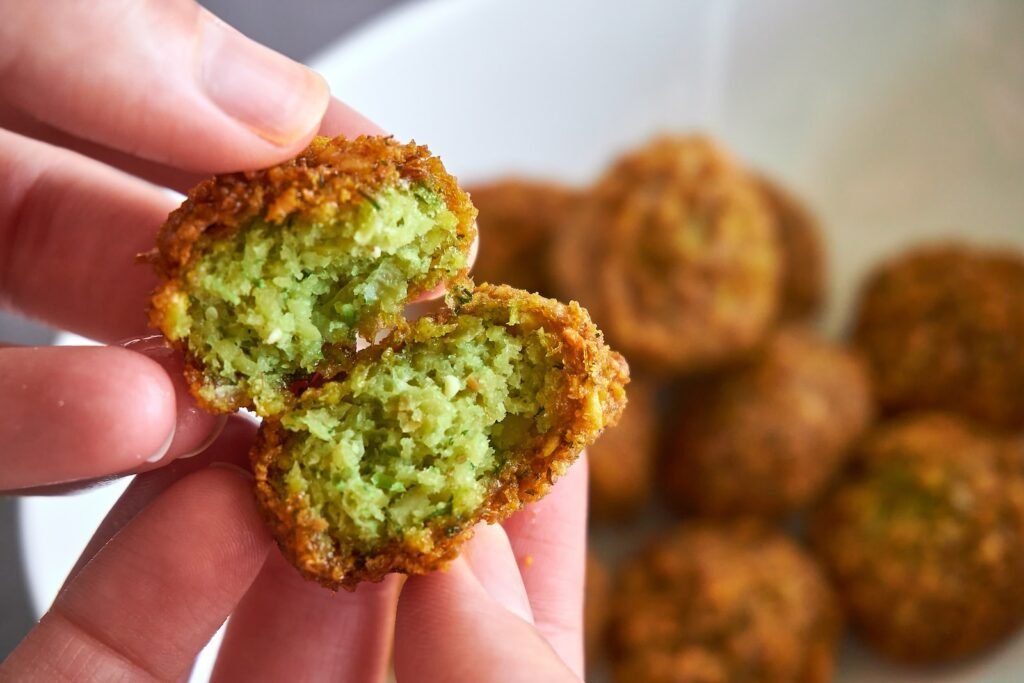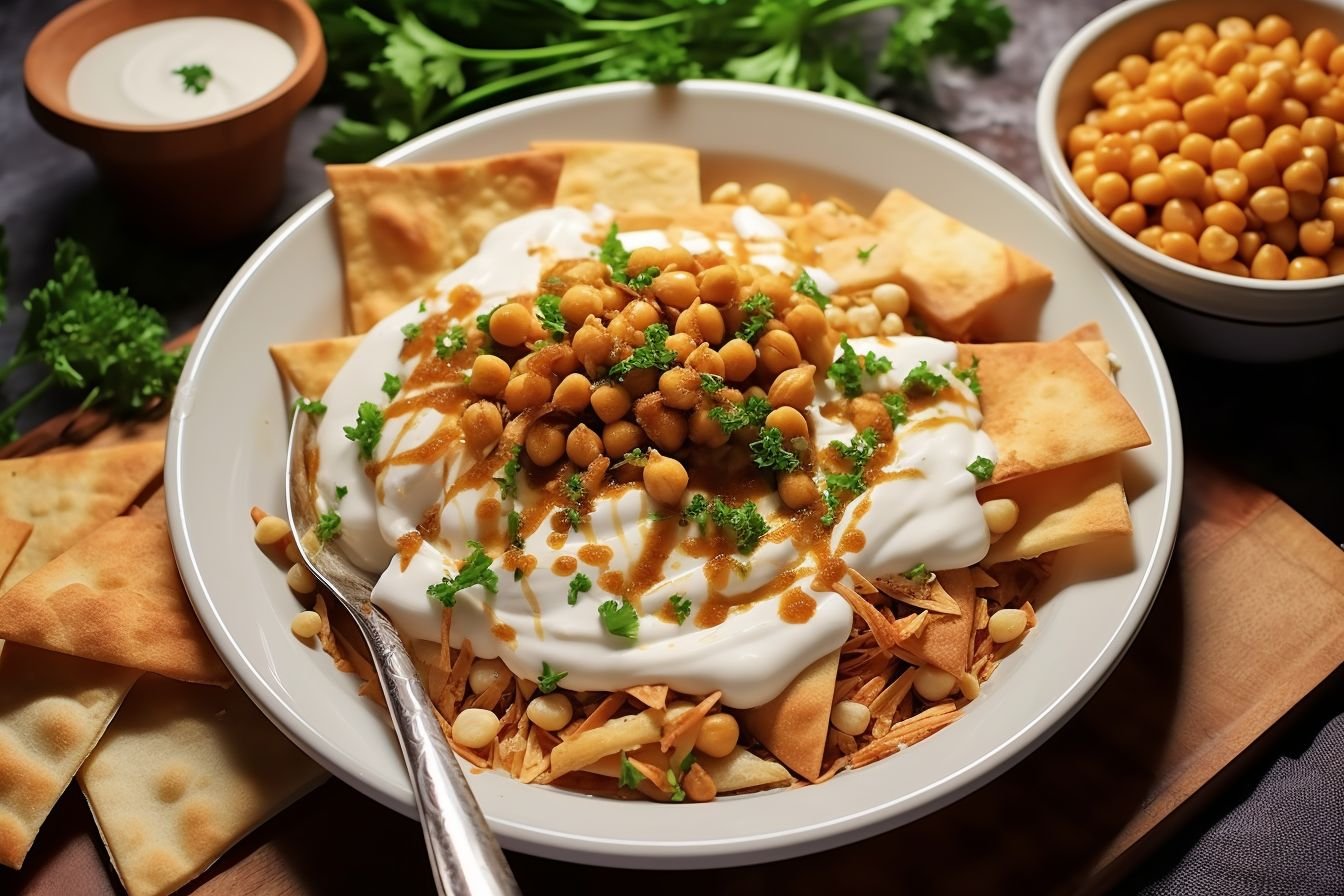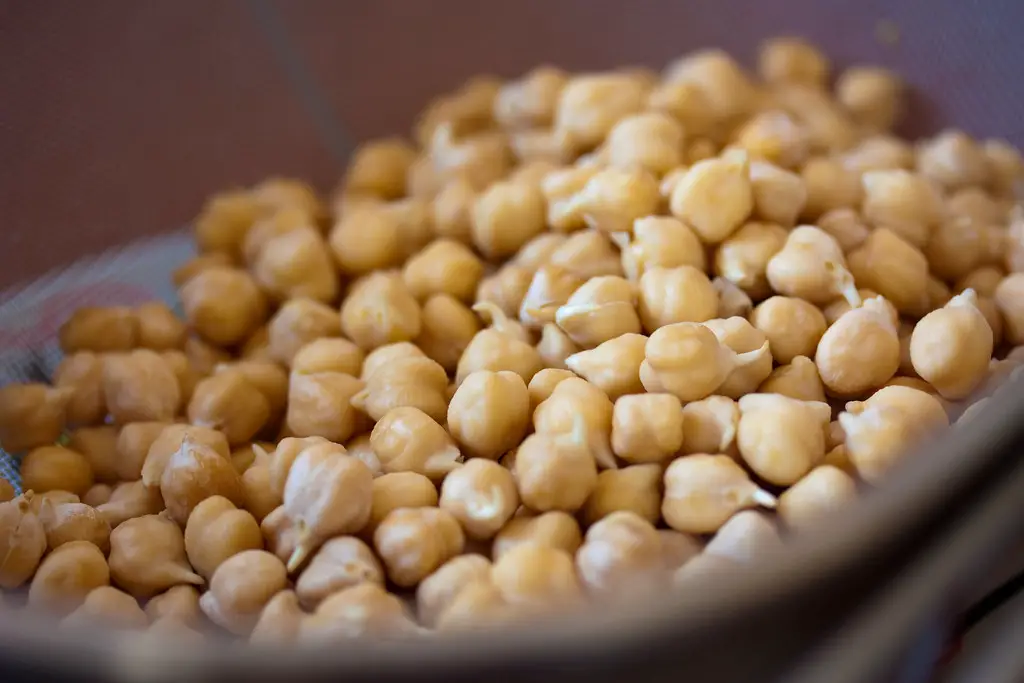As a lover of Middle Eastern cuisine, I am always on the lookout for new and exciting dishes to try. Recently, I discovered a delicious and hearty dish called fattet hummus. This dish is a popular breakfast or brunch option in many Middle Eastern countries, and it’s easy to see why.
To make fattet hummus, you’ll need a few key ingredients. These include chickpeas, plain yogurt, warm water, garlic, pita bread, slivered almonds, salt, olive oil, and fresh parsley (optional). The dish is typically served in a large bowl, with layers of pita bread, hummus, yogurt, and other toppings. It’s a filling and flavorful meal that’s perfect for any time of day.
If you’re a fan of hummus or Mediterranean flavors, then you’re sure to love fattet hummus. In this article, I’ll be sharing everything you need to know about this delicious dish, from its origins to its ingredients and preparation. So, grab a fork and get ready to dig in!
History of Fattet Hummus
This delicious dish is a staple in many Arab countries and is enjoyed by people all around the world. In this section, I will explore the history of Fattet Hummus, including its origins and regional variations.
Origins
Fattet Hummus, also known as Fatteh, is a traditional Arab dish that originated in the Levant region. The word “Fattet” means “crushed” or “crumbled,” which refers to the way the dish is prepared. It is made by layering toasted pita bread, cooked chickpeas, and a tangy yogurt sauce. The dish is then topped with a generous amount of fried nuts and spices.
The exact origin of Fattet Hummus is unknown, but it is believed to have been created in the Levant region, which includes countries like Lebanon, Syria, Israel, and Jordan. The dish has been a popular staple in these countries for centuries and is often served during special occasions and festivals.
Regional Variations
Fattet Hummus has many regional variations, each with its unique twist. In Lebanon, for example, Fattet Hummus is made with a garlic and lemon yogurt sauce, while in Israel, it is made with a tahini sauce. If you visit Jordan, you will see that the dish is often served with lamb or beef, while in Syria, it is made with boiled eggs.
In Egypt, Fattet Hummus is made with a tomato-based sauce and is often served with rice. However, in some parts of Iraq, the dish is made with boiled chickpeas and is served with a spicy tomato sauce. Regardless of the variation, Fattet Hummus remains a delicious and beloved dish in the Middle East.
In conclusion, Fattet Hummus is a delicious and versatile dish that has a rich history in the Middle East. Its origins may be unclear, but its popularity is undeniable. Whether you prefer it with garlic, tahini, or tomato sauce, Fattet Hummus is a must-try dish for anyone who loves Middle Eastern cuisine.
Ingredients:
- 1 can (15 oz) of chickpeas, washed and rinsed
- 1 cup of plain yogurt
- 3 tbsp of warm water
- 1 garlic clove
- Bite-size pieces of a pita bread (about 2 cups)
- 2 tbsp of slivered almonds
- 1/2 tsp of salt (or to taste)
- 1 tbsp of olive oil
- 1 handful of fresh parsley (optional)
How to Make Fattet Hummus?
- Start by washing and rinsing a can of chickpeas and setting them aside.
- Then, heat your oven to 350°F and chop roughly 2 cups of pita bread into small squares using scissors. Place the pita bread pieces on a greased baking sheet and bake them for 6-8 minutes or until they turn golden brown. Once done, set them aside.
- Next, prepare a creamy yogurt sauce by whisking together yogurt, a crushed garlic clove, warm water, and salt in a small bowl. Make sure to blend the ingredients well until they become creamy and smooth. Set the yogurt sauce aside.
- In a small pan on medium heat, warm 1 tablespoon of olive oil and toss in the slivered almonds. Cook them until they turn golden brown (about 3-4 minutes). Once they are done, set them aside.
- To put together your chickpea fattet, begin by placing toasted pita bread pieces on a big serving plate. Next, layer chickpeas over the pita bread, then add a coating of yogurt sauce on top. Finally, top it off with golden almonds and fresh parsley.
- Serve your fattet hummus immediately and enjoy it while it’s still warm and delicious.
Serving Suggestions
As a versatile dish, it can be served in many ways. Here are some serving suggestions that will make your meal even more delicious.
Garnishes
Garnishes add a pop of color and flavor to the dish. Here are some popular garnishes for your hummus:
- Chopped parsley
- Pomegranate seeds
- Sumac
- Pine nuts
- Fried onions
To add a touch of freshness, you can also sprinkle some chopped tomatoes and cucumber on top of the dish.
Accompaniments
Hummus is traditionally served with Arabic bread, but you can also pair it with other dishes to create a more filling meal. Here are some accompaniments that go well with fattet hummus:
- Grilled chicken or lamb
- Tabbouleh salad
- Fattoush salad
- Baba Ghanoush
- Falafel
To make the meal even more satisfying, you can also serve it with rice or roasted vegetables.
Nutritional Information
As someone who values their health, I understand the importance of knowing the nutritional value of my food. fattet hummus is a delicious and healthy dish that is packed with nutrients that are beneficial to our bodies.
One serving of this hummus (approximately 1 cup) contains about 400 calories, 20 grams of protein, and 25 grams of fiber. It is also a good source of healthy fats, with about 10 grams of monounsaturated and polyunsaturated fats per serving.
In addition to its macronutrient content, fattet hummus is rich in vitamins and minerals. It is an excellent source of vitamin C, vitamin K, and folate, and contains significant amounts of iron, magnesium, and potassium.
It is worth noting that the nutritional content may vary depending on the specific ingredients used in the recipe. For example, using whole wheat pita chips instead of white pita chips can increase the fiber content of the dish.
Overall, this is a nutritious and delicious dish that can be enjoyed as a meal or a snack. Its high protein and fiber content make it a filling and satisfying option, while its vitamin and mineral content make it a great choice for maintaining good health.
Cultural Significance
As a traditional Middle Eastern dish, fattet hummus holds a special place in the hearts and stomachs of many. This hearty meal is often served during special occasions and celebrations, making it a symbol of hospitality and generosity.
Traditional Occasions
This is a staple dish during Ramadan, the Islamic holy month of fasting. It is often served as a main dish to break the fast, and its rich and filling ingredients make it a perfect choice for this purpose. Additionally, it is commonly served during weddings, family gatherings, and other special events, where it is seen as a symbol of generosity and hospitality.
Modern Adaptations
In recent years, this dish has gained popularity outside of the Middle East, with many restaurants and chefs putting their spin on the traditional dish. Some modern adaptations include adding meat or vegetables to the dish or using different types of bread or toppings. Despite these variations, the core ingredients and cultural significance of fattet hummus remain the same.
Overall, this is more than just a delicious meal – it is a symbol of tradition, hospitality, and community. Whether enjoyed during a special occasion or as a weeknight dinner, this dish is sure to satisfy and bring people together.
Recipe Variations
As much as I love the classic fattet hummus recipe, sometimes I like to switch things up and try new variations. Here are a few of my favorite recipe variations:
Contemporary Twists
- Fattet Avocado: Mix a ripe avocado with the hummus before layering it in the serving dish. Top with diced tomatoes, sliced jalapenos, and a sprinkle of cilantro for a fresh and spicy twist on the classic recipe.
- Fattet Chicken: Cook and shred some chicken breast and layer it on top of the hummus before adding the toasted pita bread. Drizzle with a garlic yogurt sauce and sprinkle with sumac for a delicious and protein-packed variation.
- Fattet Beet: Roast some beets and dice them into small cubes. Layer them on top of the hummus before adding the toasted pita bread. Top with chopped walnuts and a drizzle of honey for a sweet and earthy twist on the classic recipe.
These are just a few of the many ways you can switch up the classic fattet hummus recipe. Don’t be afraid to get creative and try new things!
Storage Instructions
As someone who loves to make fattet hummus, I know how important it is to properly store and reheat leftovers. Here are my tips for keeping your hummus fresh and delicious:
- Store leftovers in an airtight container in the refrigerator. Fattet hummus can last up to 3 days in the fridge.
- To prevent the bread from getting soggy, you can also reheat the bread separately in the oven or toaster.
- If you want to make a big batch of it for meal prep, you can also freeze it. Just be sure to freeze the chickpea mixture separately from the bread and toppings. When you’re ready to eat, thaw the chickpea mixture in the fridge overnight.
By following these simple storage and reheating instructions, you can enjoy your homemade fattet hummus for days to come.
Conclusion
I hope you enjoyed learning about fattet hummus as much as I enjoyed writing about it. This dish is a delicious and unique way to enjoy hummus, and it’s perfect for sharing with friends and family.
One of the things I love most about it is how versatile it is. You can customize it to your liking by adding different toppings or adjusting the seasoning. Plus, it’s a great way to use up leftover pita bread or hummus.
If you’re looking for a new dish to try, I highly recommend giving fattet hummus a chance. It’s a crowd-pleaser that’s sure to impress.
Thank you for reading, and happy cooking!
As mentioned above, falafel pairs perfectly with this hummus.
Get the air fryer version recipe now (by clicking the image below):






